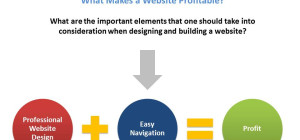In the swiftly evolving app development landscape, Flutter emerges as a game-changer, offering unparalleled efficiency and versatility. Developed by Google, this open-source UI software development kit has revolutionized how industries approach app creation, enabling the development of aesthetically pleasing, natively compiled applications for mobile, web, and desktop from a single codebase. Flutter’s unique blend of developer-friendly features, such as its own widgets and hot reload function, not only expedites the development process but also ensures a high-quality, native user experience.
As industries seek to innovate and captivate users in a competitive digital space, Flutter stands out as a robust solution, empowering businesses to craft exceptional apps that resonate with their target audience.
Flutter At A Glance
Flutter is an open-source UI software development kit created by Google. It’s designed for building natively compiled applications for mobile, web, and desktop from a single codebase. This feature is particularly appealing to developers as it simplifies the process of creating multi-platform applications.
As per a 2022 survey, Flutter was used by 42% of software developers for building cross-platform mobile applications, a significant increase from previous years. Big names like Alibaba, Google Ads, and BMW have adopted Flutter for their mobile app development, which speaks volumes about its reliability and scalability.
Cross-Platform App Development Made Easy
Flutter’s “write once, run everywhere” philosophy revolutionizes cross-platform app development by enabling a single codebase to deploy seamlessly on iOS, Android, web, and desktop platforms. This approach not only streamlines development processes but also ensures consistency and quality across different devices. For instance, the popular Hamilton app, built using Flutter, delivers a rich, engaging experience to Broadway fans on both iOS and Android platforms, illustrating Flutter’s capability to handle multimedia content and complex user interactions smoothly.
Enhanced Development Efficiency
Faster Development Cycle with Flutter’s Hot Reload Feature
Flutter significantly accelerates the development process with its Hot Reload feature. This innovative functionality allows developers to instantly see the changes they make in the code reflected in the app, without needing a full restart. This immediate feedback loop is crucial for fine-tuning features and fixing bugs swiftly, making the development cycle much faster compared to traditional methods.
The Hot Reload feature not only enhances developer productivity but also encourages experimentation with UI design and functionality, leading to more innovative and refined applications.
Reduced Development Costs and Resources
By facilitating a single codebase for multiple platforms, Flutter substantially cuts down development costs and resources. Typically, developing separate apps for iOS and Android requires two development teams, doubling the effort, time, and financial investment. Flutter eliminates this redundancy, allowing a single team to build and maintain the app across platforms.
This efficiency reduces labor costs and streamlines the development process, making it an economically viable solution for businesses, especially startups and SMEs looking to maximize their resources.
Streamlined Collaboration Between Designers and Developers
Flutter bridges the gap between designers and developers, fostering better collaboration and smoother workflow. With its rich set of customizable widgets and the ability to create complex UIs, designers have greater freedom to express their vision, which developers can implement more accurately. This synergy is further enhanced by the Flutter framework’s layout and theming mechanisms, which ensure that the final product closely aligns with the initial design intent. As a result, teams can work more cohesively, reducing misunderstandings and revisions and bringing high-quality apps to market faster.
High-Performance App With Native Feel
Flutter’s exceptional performance is largely attributed to its use of Dart, a modern programming language optimized for UI development, and Skia, a powerful 2D graphics engine. Dart’s ahead-of-time (AOT) compilation to native code enables Flutter apps to run at blazing-fast speeds, essential for maintaining smooth animations and transitions.
Meanwhile, Skia renders each UI component directly to the canvas, ensuring crisp and fluid graphics. This combination allows Flutter to deliver high-performance applications indistinguishable from native apps in terms of speed and responsiveness.
Case
In the e-commerce sector, the eBay Motors app stands out as a testament to Flutter’s app example capabilities. Designed to provide a comprehensive platform for buying and selling vehicles, the app harnesses Flutter’s performance features to manage extensive inventories, complex search functionalities, and high-resolution images without compromising speed or user experience.
This level of performance, crucial for retaining user engagement in a competitive market, exemplifies how Flutter is adept at handling the demands of diverse industries, delivering apps that not only function seamlessly but also provide a native-like experience.
Strong Community and Support
The Flutter framework is bolstered by a robust and active community, comprising developers, contributors, and enthusiasts worldwide. This vibrant ecosystem offers an abundance of resources, including extensive documentation, forums, and a plethora of tutorials, aiding both novice and experienced developers in their Flutter journey.
The community’s collaborative nature not only enriches the Flutter experience but also simplifies the process of hiring Flutter developers who are well-versed in the latest practices and innovations.
This extensive support network is pivotal in enhancing app development, offering solutions, sharing best practices, and fostering continuous learning and improvement within the Flutter ecosystem.
Flutter’s Role In Emerging Technologies
Flutter in Iot
Flutter’s flexible and adaptable framework makes significant inroads in the Internet of Things (IoT) and wearable technology sectors. Its ability to deliver consistent and responsive UIs across various devices, including those with limited display capabilities, makes it ideal for IoT applications.
Wearable tech, in particular, benefits from Flutter’s efficiency in handling real-time data and its compatibility with hardware features, enabling developers to create intuitive, user-friendly interfaces for smartwatches and fitness trackers. The framework’s scalability ensuresFlutter-based IoTand wearable apps can easily grow with evolving technology trends.
AI and Machine Learning Integration
Flutter’s integration with AI and Machine Learning (ML) technologies is paving the way for more intelligent and responsive applications. By leveraging plugins and packages that connect Flutter apps with AI and ML models, developers can implement features like image recognition, natural language processing, and predictive analytics.
This integration is particularly beneficial in sectors like healthcare, finance, and retail, where personalized user experiences and data-driven decision-making are crucial. Flutter’s ability to work seamlessly with AI/ML enhances its suitability for developing apps that are functionally rich but also smart and adaptive.
Testing and Quality Assurance in Flutter
Flutter facilitates comprehensive app testing at various levels, with unit and widget testing being foundational. Unit tests in Flutter verify the logic of functions, methods, and classes, ensuring that individual parts of the app work correctly. Widget testing, on the other hand, tests the UI components at the individual level.
This includes checking widget behavior and rendering, ensuring the user interface looks and interacts as expected. Flutter’s robust testing frameworks and tools enable developers to create more reliable, bug-free applications, enhancing the overall quality and user experience.
Furthermore, Flutter fits well intoContinuous Integration/Continuous Deployment (CI/CD) pipelines. This integration facilitates automated testing and deployment processes, enabling a more efficient and reliable delivery of updates and new features. By incorporating CI/CD practices, Flutter development teams can rapidly and safely deploy high-quality applications, continuously delivering improvements and responding quickly to changing market demands or user feedback.
Conclusion
In sum, Flutter stands not merely as a technology but as a beacon of innovation in app development. Its unification of design, functionality, and efficiency marks a new chapter in how we approach and conceive digital solutions. As it continues to evolve, embracing new challenges and technologies, Flutter is undoubtedly set to remain at the forefront of this dynamic industry, shaping the future of app development with every line of code. In this ever-changing digital landscape, Flutter emerges not just as a tool, but as a visionary force, leading the charge towards more intuitive, impactful, and inclusive app experiences.







